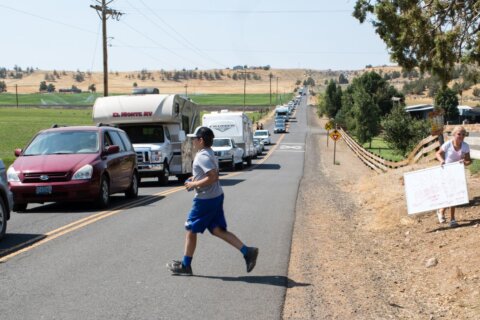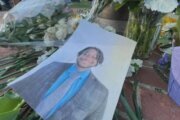WASHINGTON — Transportation planners took out the crystal ball on Wednesday to present a profile of what things could look like in the year 2040 and how people will get around.
The population is expected to grow in every county in the region. The number of jobs is expected to increase, too. It all means that the transportation system is expected to have almost 4 million more trips per day in 2040, according to the report from the National Capital Region Transportation Planning Board.
The authors note that all modes of transportation are projected to see more trips in 2040. Walk and bicycle trips are projected to see a 72 percent jump for commuters — that’s 104,000 more trips. Transit trips are expected to increase 33 percent. Solo drivers are expected to increase 18 percent; carpooling could increase 40 percent.
“If you look at all trips made during the day, currently it’s about 11 percent by walk and bike. By 2040 that would increase to 14 percent. At the same time, it shows a reduction in a single-driver share by the same amount. We’re seeing the shift from the single-driver to walking and biking,” says Robert Griffiths, of the Transportation Planning Board.
Griffiths predicts that most people will still drive, but everything they’ll need will be in one place. People would not drive to lunch or to run errands. More people will work in activity centers — areas where people can eat, live, work and play in one location.
Congestion on our local highways is also expected to worsen with the population increase.
The report reads: “Though congestion on many segments of the region’s major highway system is expected to get worse over this period of time, some segments of highway will see slight relief in congestion thanks to capacity expansions or changes in travel behavior. Routes seeing improvements in congestion include portions of [interstate 66] east, I-70 east and Va.-267 east.”
Transit will continue to be an important way for people to get around. Metro is expected to remain as the focal point in the D.C. region. The report finds that without more eight-car trains on Metro during morning rush, four out of five lines entering downtown D.C. are expected to be congested or heavily congested in 2040. “Congested” refers to railcars with 100 to 120 passengers inside; “heavily congested” refers to 120 or more people per railcar.
“The money for Metro to have eight-car trains in 2040 is not there yet. We can’t just assume that somewhere in the future that money will come. But if we don’t do it, then you will see extreme crowding on Metro in 2040, and likely much sooner,” says Griffiths.
“I don’t think the U.S. government is going to widen Constitution Avenue. I don’t think the State Department is going to move. I don’t think the Kennedy Center will be torn down. The reality is that we simply have to find other modes to get in and out of the District of Columbia,” adds Falls Church Vice Mayor Dave Snyder.
Lawmakers are still struggling with how exactly to solve these woes. Members of the Transportation Planning Board will receive three briefings on Metro and the financial challenges the transit agency faces between now and the end of the year.







